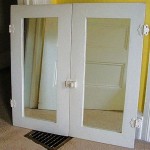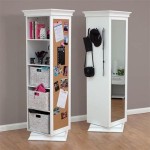Mirror iPhone to Samsung Smart TV for Free: A Comprehensive Guide
The ability to mirror an iPhone's screen to a Samsung Smart TV can significantly enhance entertainment, productivity, and collaborative experiences. Whether for sharing personal photos and videos, presenting business documents, or enjoying mobile games on a larger display, screen mirroring offers considerable convenience. While dedicated hardware solutions and paid software exist, several free methods allow users to achieve this functionality, providing accessible pathways to seamless device integration.
This article provides a detailed examination of various methods for mirroring an iPhone to a Samsung Smart TV without incurring costs. It outlines the necessary equipment, software, and configuration steps for each approach, ensuring that users can select the most suitable option based on their technical proficiency and specific requirements.
Understanding the Underlying Technologies
Before delving into specific mirroring techniques, it is crucial to understand the technologies facilitating the process. These technologies are integral to the communication and data transfer between the iPhone and the Samsung Smart TV.
AirPlay, developed by Apple, is a proprietary wireless communication protocol enabling audio and video streaming between Apple devices and AirPlay-compatible devices. While primarily designed for Apple's ecosystem, some third-party devices, including certain Samsung Smart TVs, incorporate AirPlay 2 support, allowing direct mirroring from an iPhone. When available, AirPlay generally offers the most seamless and user-friendly mirroring experience.
Wi-Fi Direct is a wireless standard enabling direct communication between devices without requiring a central access point like a router. It allows devices to establish a peer-to-peer connection, facilitating data transfer at high speeds. Certain screen mirroring apps leverage Wi-Fi Direct to establish a connection between the iPhone and the Samsung Smart TV, thereby bypassing the need for a shared Wi-Fi network.
DLNA (Digital Living Network Alliance) is a standard that allows devices on a home network to share digital media content. Although not directly a mirroring technology, DLNA-compatible apps can stream photos, videos, and music from an iPhone to a Samsung Smart TV, providing a form of content sharing that resembles mirroring in certain contexts.
Leveraging AirPlay 2 for Seamless Mirroring
If the Samsung Smart TV is equipped with AirPlay 2 support, mirroring an iPhone screen becomes a straightforward process. Compatibility can be typically verified within the TV's settings menu or on the manufacturer's website. Ensure both the iPhone and the TV are connected to the same Wi-Fi network.
To initiate mirroring via AirPlay 2, access the Control Center on the iPhone by swiping down from the top-right corner of the screen (on iPhones with Face ID) or swiping up from the bottom of the screen (on iPhones with a Home button). Locate and tap the "Screen Mirroring" icon. A list of available AirPlay-compatible devices will appear. Select the corresponding Samsung Smart TV from the list.
Upon selection, a passcode may appear on the TV screen. Enter this passcode on the iPhone to establish the connection. The iPhone's screen will then be mirrored onto the Samsung Smart TV display. To stop mirroring, return to the Control Center, tap the "Screen Mirroring" icon, and select "Stop Mirroring."
AirPlay 2 offers several advantages. It provides a stable and high-quality mirroring experience with minimal latency. It also allows simultaneous use of the iPhone for other tasks while mirroring, without interrupting the display on the TV. However, the inherent limitation is the requirement for AirPlay 2 support on the Samsung Smart TV.
Utilizing Third-Party Mirroring Applications
In the absence of native AirPlay 2 support, third-party mirroring applications provide an alternative approach. These apps, available on the App Store, facilitate screen mirroring through various methods, including Wi-Fi Direct or proprietary protocols. Many mirroring apps offer free versions with basic functionality and paid versions with enhanced features. Researching and selecting a reputable and well-reviewed app is crucial to ensure both performance and security.
Popular free options include applications that use screen recording in conjunction with local network streaming to project the iPhone screen onto the TV. This typically involves installing a server component on the Samsung Smart TV through the TV's app store, or using the TV's web browser to access a webpage where the mirrored screen is displayed.
When using a third-party app, the general process involves downloading and installing the app on the iPhone. If a server component is required on the TV, it must also be installed and launched. On the iPhone, the app will typically scan for available devices on the network. Select the Samsung Smart TV from the list, and follow the on-screen instructions to initiate mirroring. The process may involve granting the app necessary permissions, such as access to the local network and the iPhone's screen recording functionality.
The performance of third-party mirroring apps can vary depending on the app itself, the network conditions, and the hardware capabilities of both the iPhone and the TV. Some apps may introduce noticeable latency, which can affect the suitability of the mirroring for real-time applications like gaming. It's also important to be aware of potential security implications when granting third-party apps access to sensitive information or network resources. Always review the app's privacy policy and permissions before installation.
Exploring DLNA for Media Streaming
While not a direct screen mirroring solution, DLNA provides a method for sharing media content from an iPhone to a Samsung Smart TV. This involves using a DLNA-compatible app on the iPhone to stream photos, videos, and music to the TV. The TV effectively acts as a playback device, rendering the media content streamed from the iPhone.
Several DLNA apps are available on the App Store, both free and paid. These apps typically scan the iPhone's media library and allow users to select specific files or folders to stream to the TV. The Samsung Smart TV must also be DLNA-compatible and configured to receive streaming content.
To use DLNA for media streaming, install a DLNA-compatible app on the iPhone. Ensure both the iPhone and the TV are connected to the same Wi-Fi network. Launch the app and select the Samsung Smart TV as the playback device. Browse the iPhone's media library within the app and select the desired content to stream. The TV will then begin playing the selected media.
DLNA is particularly well-suited for sharing personal photos and videos on a larger display. It is also useful for streaming music from an iPhone to the TV's audio system. However, DLNA does not mirror the entire iPhone screen; it only streams specific media files. This limits its applicability for tasks such as presenting documents or playing mobile games.

4 Easy Ways To Mirror Iphone Samsung Tv For Free

4 Easy Ways To Mirror Iphone Samsung Tv For Free

6 Free Ways To Mirror Iphone Samsung Tv Without Apple

Screen Mirror To Samsung Tv Android Mac Ios Free App

4 Easy Ways To Mirror Iphone Samsung Tv For Free

How To Screen Mirror Iphone Samsung Tv In 3 Steps Free

2024 How To Screen Mirror From Your Iphone Samsung Tv

How To Stream From An Iphone Using Airplay 2

Screen Mirroring To Your Samsung Tv

How To Connect Phone Tv Screen Mirror Iphone A Samsung Easy Setup








